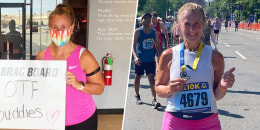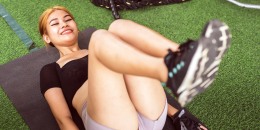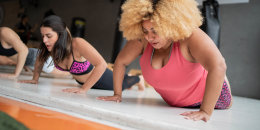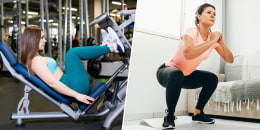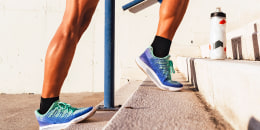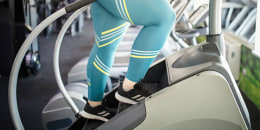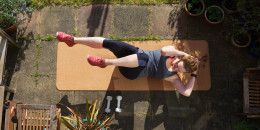For mobility workouts from Danielle Gray — plus fitness challenges, walking podcasts, meal plans and inspiration — download the Start TODAY app!
Looking to move better, feel stronger and say goodbye to stiff hips? You’re not alone! As a personal trainer and mobility coach, I get lots of questions about hip mobility specifically, which isn't surprising considering many of us are living an increasingly sedentary lifestyle.
Sitting all day causes the hip flexors to shorten and tighten, which can cause pain in other areas like the low back, too.
Luckily, there is something you can do about it. Here's everything you need to know about keeping your hips happy and healthy.
Mobility vs. flexibility
To keep our bodies mobile and moving efficiently, we need to know the difference between mobility and flexibility and why training both is so important.
- Mobility is your ability to move through a range of motion with muscle control.
- Flexibility is about how far your muscles can stretch passively.
Both matter for healthy movement, but they work differently. Flexibility exercises help increase how far you can stretch while mobility training improves your quality of movement and how well you can control your body through that stretch.
Hips anatomy: muscles and joints
Think of your hips as the body’s grand central station — everything passes through here! This incredible joint includes:
- The hip socket (acetabulum)
- The ball of your thigh bone (femoral head)
- Supporting muscles, including: powerful glutes, essential hip flexors, stabilizing rotators
- Surrounding ligaments and tendons
Hip mobility benefits
Poor hip mobility isn’t just about feeling stiff. It can negatively impact your low-back health since your back often compensates for tight hips. It can also affect your knee alignment as hip issues can create a domino effect down to your feet. Healthy hips are important not only for athletic performance, but also for performing daily activities like getting up from a chair, climbing stairs, sitting down on the floor, picking up your kids, walking your dog and saving yourself from falls.
Hip mobility and strengthening exercises
These exercises will help strengthen the hip muscles and improve mobility and range of motion in the joint.
World’s greatest stretch
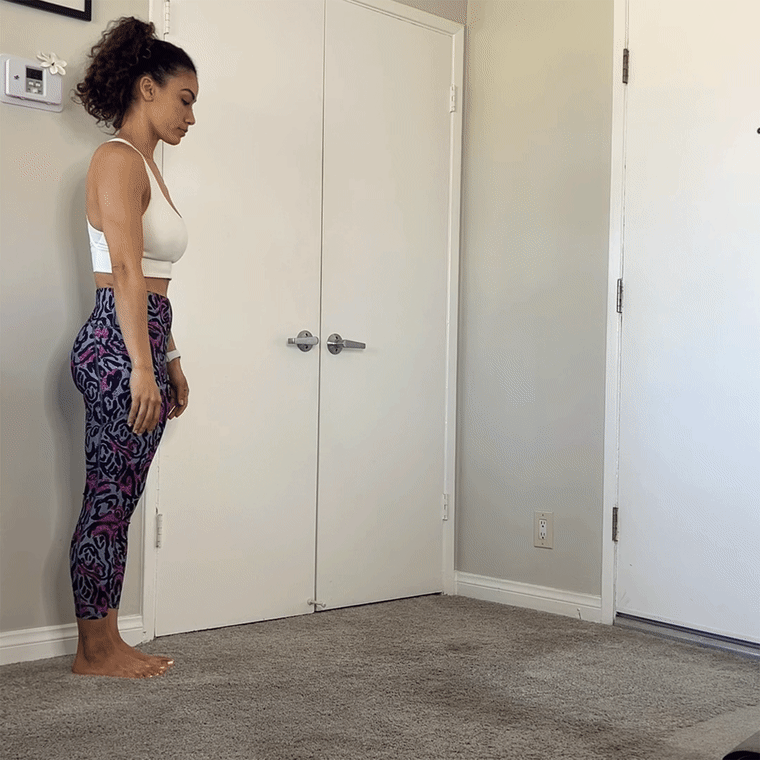
Walk out to a plank position. Bring one leg forward into a lunge position. Reach the arm of the same leg up to the sky. Rotate your torso toward the front leg. Hold briefly, then switch sides.
90-degree glute lifts

Sit up tall with one leg bent forward at 90 degrees and one behind you at 90 degrees. Adjust until you are able to lift your back leg. Sit tall, squeeze your back glute, and lift your entire leg parallel to the floor. Lower slowly with control. Perform 10 reps and then switch sides so that the opposite leg is in front.
90/90 hip switches
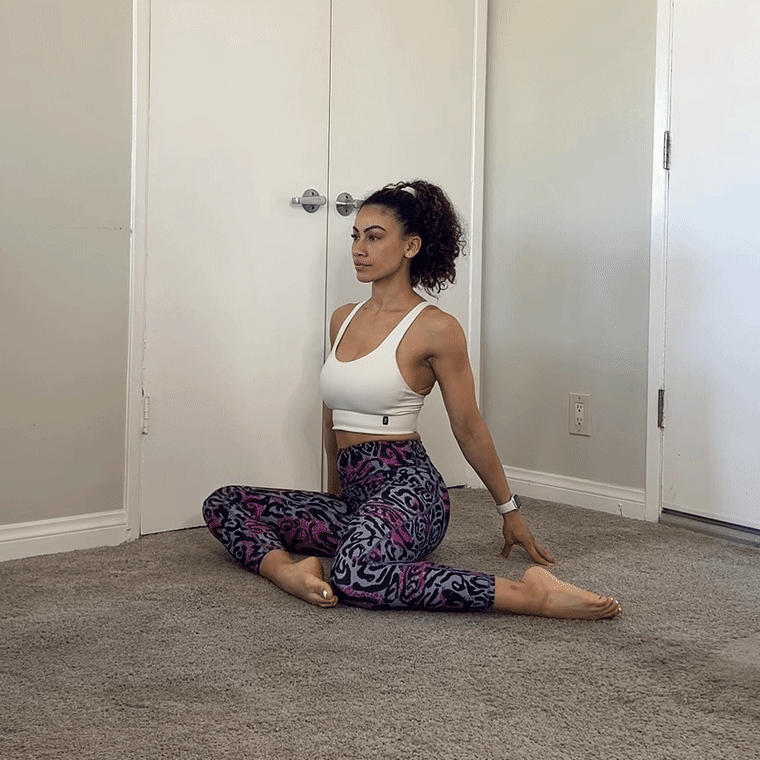
Sit up tall with the left leg bent forward at 90 degrees and the right leg behind you at 90 degrees. Without rocking backward, move through the hip joint to switch positions so that the right leg is now forward and the left leg is behind you. Continue to alternate, moving smoothly and with control.
Hip CARs (controlled articular rotations)

Stand on one leg holding onto a wall for balance if you need. Bring the knee up toward the chest so that it is bent at 90 degrees. Without moving the rest of your body, draw circles with your knee by opening it to the side, rotating it down toward the ground and behind you and then back up in front of you. Keep your spine neutral and make the circles bigger as you warm up. Perform 10-12 reps and then switch sides.
Standing gate openers
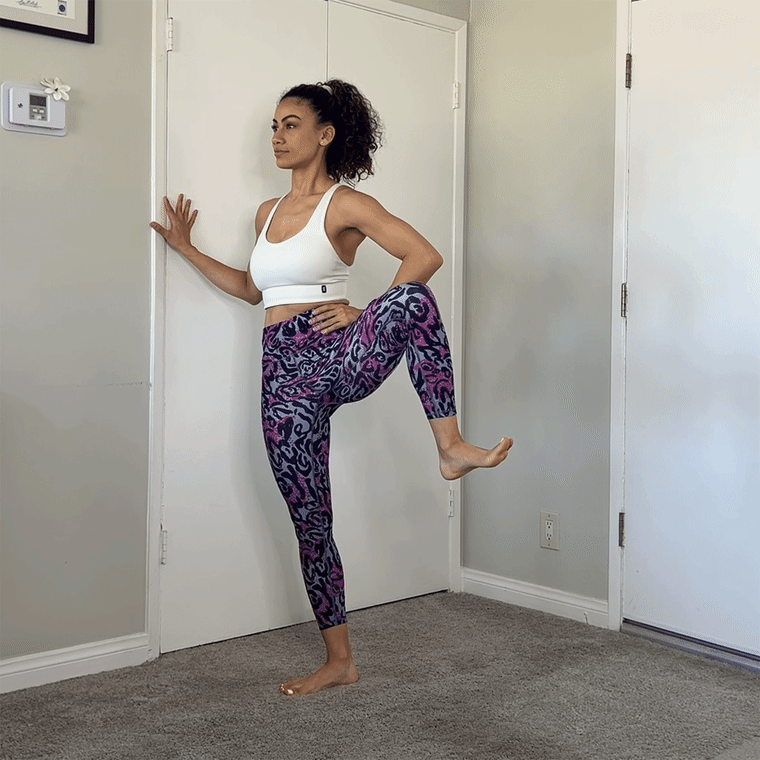
Stand tall, holding a wall for balance if needed. Lift your knee toward the chest at a 90-degree angle. Open your knee out to the side. Squeeze your standing leg glute. Pull the knee back to the front, returning to the starting position. Perform 10-12 reps and then switch sides.
Kneeling hinges
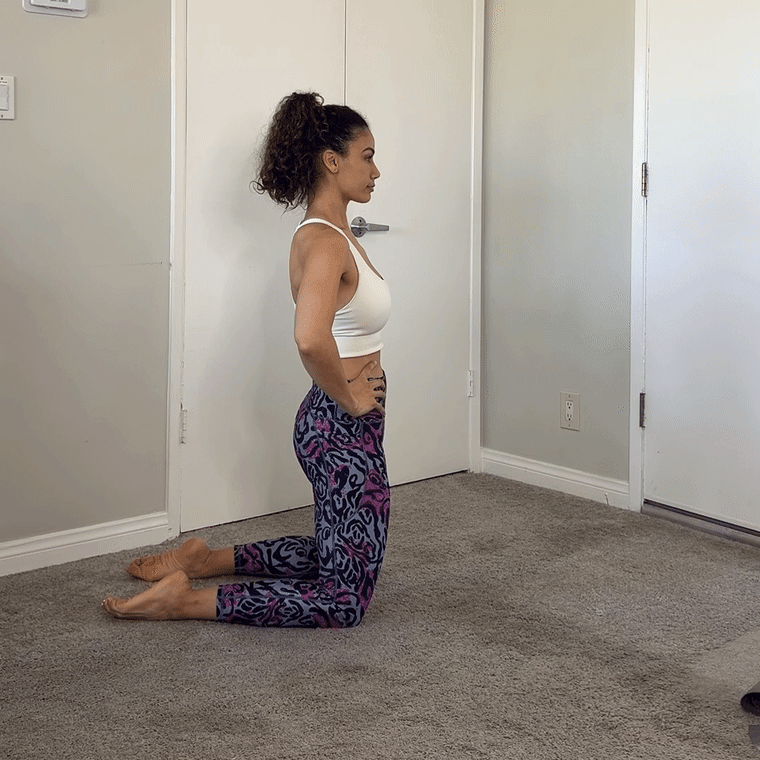
Start in a tall kneel. Hinge backward keeping your back flat and core engaged, feeling the stretch in your glutes. To return to the starting position, squeeze the glutes and push your hips forward to full extension. Your abs should stay tight and your back should not arch.
Fire hydrant circles
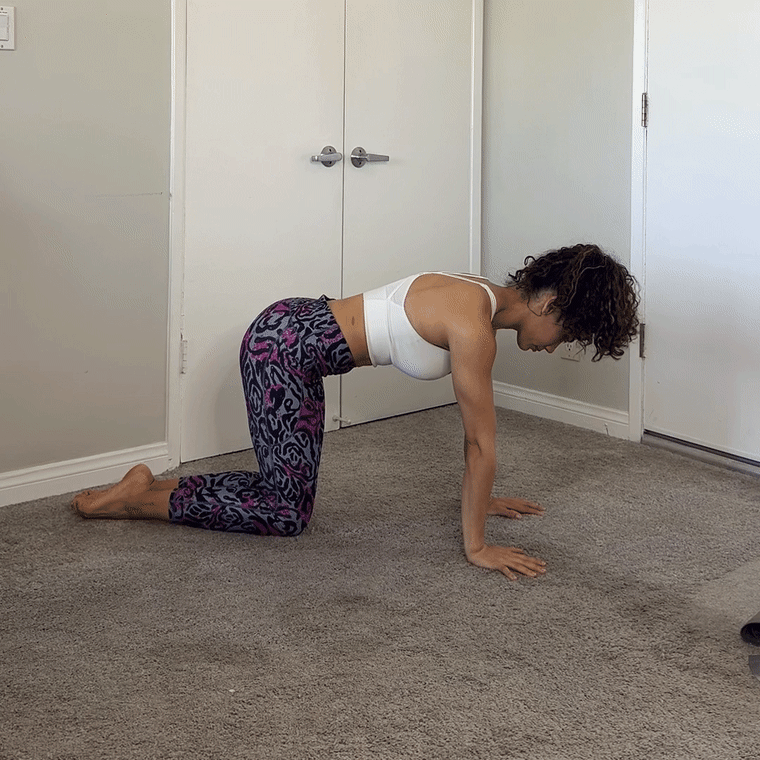
Start on all fours on the floor with your wrists below your shoulders and your knees under your hips. Lift your leg out to the side keeping a constant 90-degree angle at your knee. Rotate it back and down to the starting position. Then reverse the order, lifting your foot up toward the sky, and then your knee out to the side before coming back down to the starting position. Keep your torso as still as possible by bracing yourself with your core. Perform for 10-12 reps, alternating directions, and then switch sides.
Isometric hold incline mountain climbers
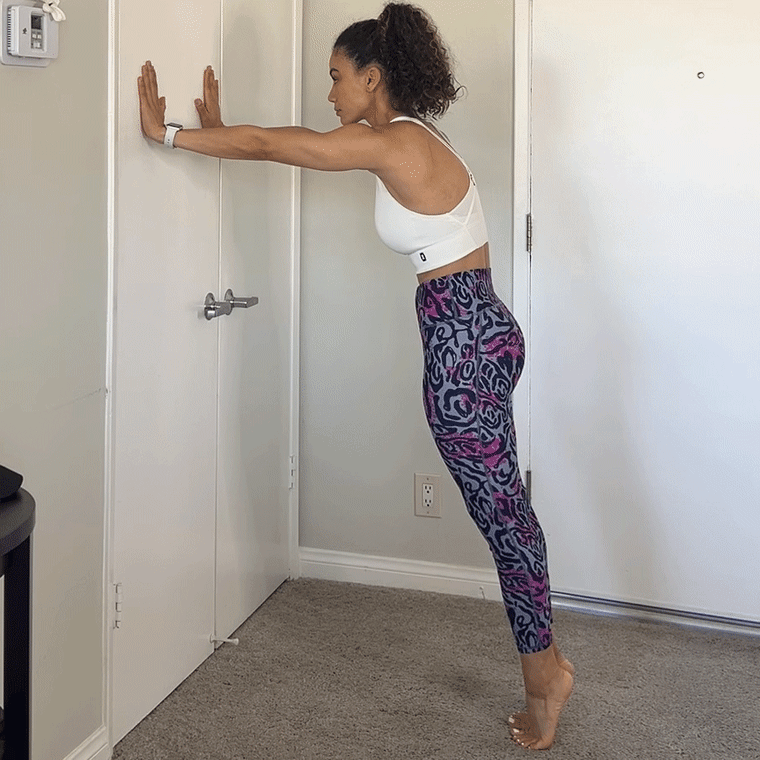
Start leaning against a wall in a modified plank on your toes. Keep your wrists shoulder-width apart and your hips down and flat. Tuck your tailbone under and press into your low back. Drive your knee into your chest and keep your body alignment. Squeeze your standing leg glute and hold for at least 5 seconds. Lower and repeat on the other side. Continue alternating.
Seated single leg lifts
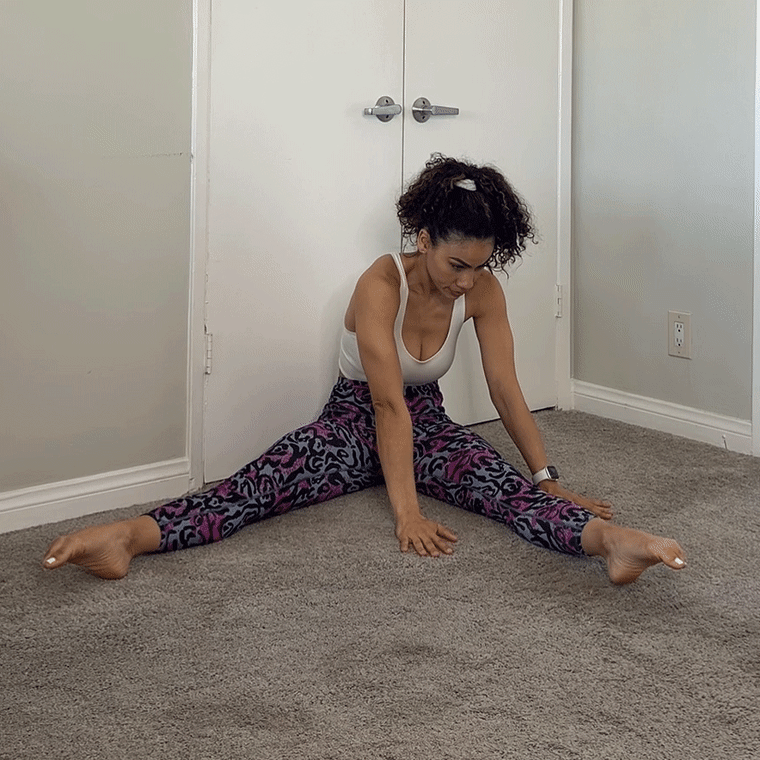
Start seated with your legs straight and slightly apart. Put your hands on either side of one knee, or by your ankle. Keep your back round, palms flat and leg straight. Lift your leg off the ground as high as you can. Perform 10-12 reps and then repeat on the other leg.
Lateral lunge shifts

Start standing with legs wide. Shift to one side, stick your hips back, and keep your back flat. Keeping your head at the same height, slowly shift your weight to the opposite leg. Continue alternating.
Static hip stretches
These hip stretches are perfect for a post-workout cooldown or evening routine.
Pigeon pose
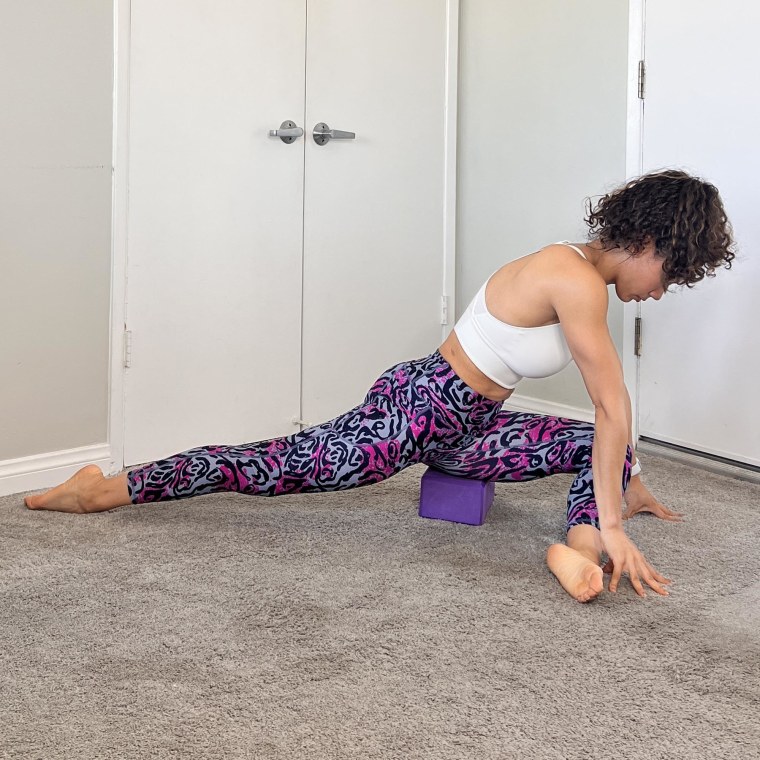
Start in a low lunge. Let the front knee fall outward and take a seat on your front hip. If you have tight hips, you can place a yoga block under your front hip. Square the hips forward and tuck the back knee under. Fold forward as comfortably as possible. Hold for 30 seconds and then switch sides.
Figure-4 stretch

This stretch can be done lying down or sitting. Lie on your back and cross your ankle over the opposite knee. Thread your hands behind the supporting leg and gently pull toward your chest. For a sitting variation, sit with your knees bent and feet flat on the floor. Place your hands on the floor behind you. Cross one ankle over the opposite knee and gently press into the hands to reach your chest toward the legs. Hold for 30 seconds and switch sides.
Half-kneeling hip flexor stretch
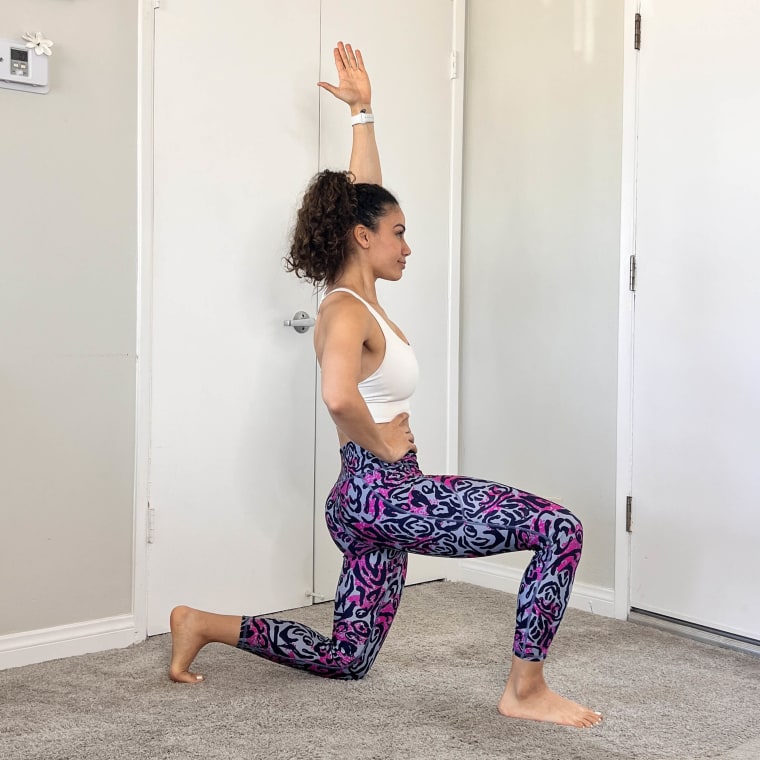
Come into a half-kneeling position with the front foot on the ground with the knee bent at 90 degrees. Tuck your pelvis under and lean forward slightly. Feel the stretch in the front of hip. Hold for 20-30 seconds and then perform on the opposite side.
Tips to improve hip mobility
- Start slow. Begin with 2-3 exercises that feel most comfortable. Focus on your form over range of motion and add more gradually.
- Listen to your body. Some tension and cramping is okay, pain is not. Back off if something doesn’t feel right.
- Be consistent. Daily practice beats occasional intense sessions; even 5-10 minutes helps. Morning and evening are ideal times to add some mobility work to build consistent habits.
Remember: Better mobility isn’t about becoming a contortionist — it’s about moving well, feeling good and staying active in the ways you love. Start by adding just one or two exercises to your daily routine and you’re on your way to healthier hips!

